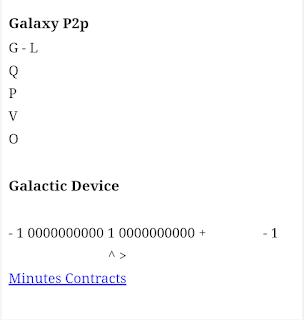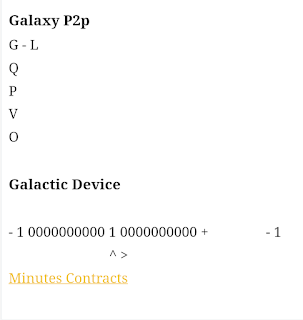Total Weight = TwA
TwA
A Total Atmosphere Weight
Weight of 8bNe < + 0 >
Weight of Atmosphere 8bNe < - 0 >
_____________________________________________________
_____________________________________________________
81 BNe = ( TwA ) < \ 1 > (
____________________________
N nbbb
) < \0 > = ) 81 BNe < 1> )
N n n n n n n n n n n n. Bb b < 1 / > . N. N n n n n n n n n n n n n n n n n n n n n n n n n 0 n n n n n n n n n v v.
_____________________________________________________
As of April 2025, the estimated total world population is around 8.1 billion people.
This number is based on projections by the United Nations and the World Bank.
Let’s estimate the total weight of all humans on Earth.
Assumptions:
- World population: ~8.1 billion people
- Average human weight:
- Global average: ~62 kg (136 lbs) — based on WHO estimates
Calculation:
8.1 billion people × 62 kg/person = 502.2 billion kilograms
That’s about 502 million metric tons of human mass.
To put it in perspective, that’s roughly the same as:
- 2.5 million blue whales, or
- 50,000 Eiffel Towers
502.2 billion kilograms into pounds (lbs):
1 kg = 2.20462 lbs
Calculation:
502.2 billion kg × 2.20462 = 1.107 trillion lbs (approx)
The total estimated weight of all humans on Earth is around 1.1 trillion pounds.
_____________________________________________________
Earth Total Weight
The Earth weighs about 5.97 × 10²⁴ kilograms — that's nearly 6 septillion kilograms!
In Total:
- 5,970,000,000,000,000,000,000,000 kg
- Or about 13.2 septillion pounds
That’s the estimated mass of the entire planet, including the atmosphere, oceans, crust, mantle, and core. Technically, we say "mass" instead of "weight" because weight depends on gravity, but since we're talking about the whole planet, mass is the more accurate term. Want a comparison to something else massive?
more detail:
Earth’s Mass
- The Earth's mass is approximately 5.972 × 10²⁴ kilograms.
- That’s 5,972,000,000,000,000,000,000,000 kg.
- In pounds, that’s roughly 1.316 × 10²⁵ pounds (around 13,160,000,000,000,000,000,000,000 lb).
This is known through careful astronomical measurements, like tracking the motion of satellites and the Moon, and using Newton’s Law of Universal Gravitation.
What Does This Number Include?
It includes everything that makes up the Earth:
- Atmosphere: All the air and gases around the planet.
- Hydrosphere: All water (oceans, rivers, lakes, glaciers).
- Crust: The solid outer layer, where we live.
- Mantle: The thick layer of semi-solid rock under the crust.
- Core: The very dense inner layers (liquid outer core and solid inner core).
Why Do We Say Mass and Not Weight?
- Mass is a measure of how much matter is in something.
- Weight is the force of gravity acting on that mass.
- Since Earth isn’t sitting on another object being pulled by gravity, it technically doesn't "weigh" anything in the traditional sense. So when scientists say “how much Earth weighs,” they really mean “what is Earth’s mass?”
Fun Comparisons
- The Moon’s mass is only about 1/81 of Earth’s mass.
- The Sun is about 333,000 times more massive than Earth.
- Earth’s atmosphere alone weighs about 5.15 × 10¹⁸ kg — that’s over 5 quadrillion metric tons.
Earth's mass distribution across its primary components:
Earth's Mass Distribution
___________________________
| |
| Atmosphere | 0.000086%
|___________________________|
| |
| Hydrosphere | 0.023%
|___________________________|
| |
| Crust | 0.43%
|___________________________|
| |
| Mantle | 67%
|___________________________|
| |
| Core | 32%
|___________________________|
Approximate Mass Distribution:
- Atmosphere: ~0.000086% of Earth's total mass
- Hydrosphere: ~0.023%
- Crust: ~0.43%
- Mantle: ~67%
- Core: ~32%
These percentages provide a visual representation of how Earth's mass is allocated among its various components.
Certainly! Let's delve deeper into Earth's composition and the distribution of its mass among various components:
Earth's Total Mass
- Total Mass: Approximately 5.972 × 10²⁴ kilograms.
Detailed Breakdown of Earth's Components
-
Atmosphere
- Mass: About 5.15 × 10¹⁸ kilograms.
- Percentage of Total Mass: Approximately 0.000086%.
- Composition: Predominantly nitrogen (78%) and oxygen (21%), with traces of other gases like argon and carbon dioxide.
- Role: Provides breathable air, protects from harmful solar radiation, and regulates temperature.
-
Hydrosphere
- Mass: Estimated at 1.4 × 10²¹ kilograms.
- Percentage of Total Mass: Roughly 0.023%.
- Composition: Includes all Earth's water—oceans, rivers, lakes, glaciers, and groundwater.
- Role: Essential for all known forms of life, climate regulation, and geological processes.
-
Crust
- Mass: Approximately 2.6 × 10²² kilograms.
- Percentage of Total Mass: About 0.43%.
- Thickness: Varies from 5 to 70 kilometers.
- Composition: Mainly oxygen (46.6%) and silicon (27.7%), forming silicate minerals.
- Role: Earth's outer shell, hosting continents and ocean basins.
-
Mantle
- Mass: Around 4.01 × 10²⁴ kilograms.
- Percentage of Total Mass: Nearly 67%.
- Thickness: Extends to a depth of approximately 2,900 kilometers.
- Composition: Rich in silicate minerals containing iron and magnesium.
- Role: Drives plate tectonics through convective currents, affecting volcanic activity and mountain formation.
-
Core
- Total Core Mass: About 1.935 × 10²⁴ kilograms.
- Outer Core: Approximately 1.835 × 10²⁴ kilograms.
- Inner Core: Around 9.675 × 10²² kilograms.
- Percentage of Total Mass: Combined, the core constitutes about 32% of Earth's mass.
- Composition: Predominantly iron (88.8%) and nickel (5.8%), with smaller amounts of sulfur and trace elements.
- Role: The outer core generates Earth's magnetic field through convective movements of molten metals, while the inner core remains solid due to immense pressure.
- Total Core Mass: About 1.935 × 10²⁴ kilograms.
Elemental Composition of Earth
- Iron (Fe): Approximately 32.1% by mass.
- Oxygen (O): About 30.1%.
- Silicon (Si): Roughly 15.1%.
- Magnesium (Mg): Arounl0d 13.9%.
- Other Elements: Sulfur (2.9%), nickel (1.8%), calcium (1.5%), aluminum (1.4%), with the remaining 1.2% comprising trace elements.
Visual Representation
For a graphical depiction, consider viewing this pie chart illustrating Earth's mass distribution:
Note: The percentages and masses provided are approximations based on current scientific understanding. Variations may exist due to differing measurement techniques and ongoing research.







0 Comments